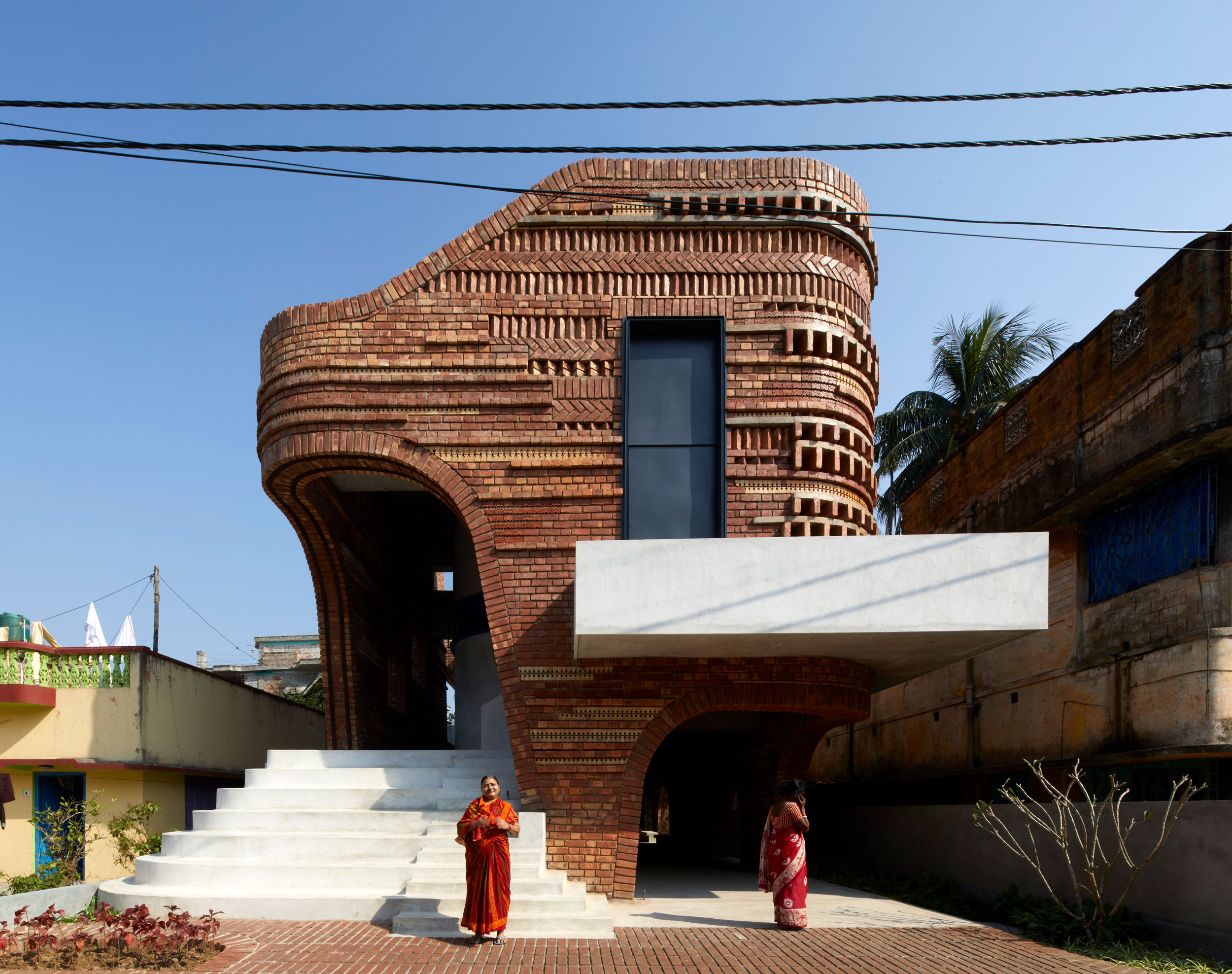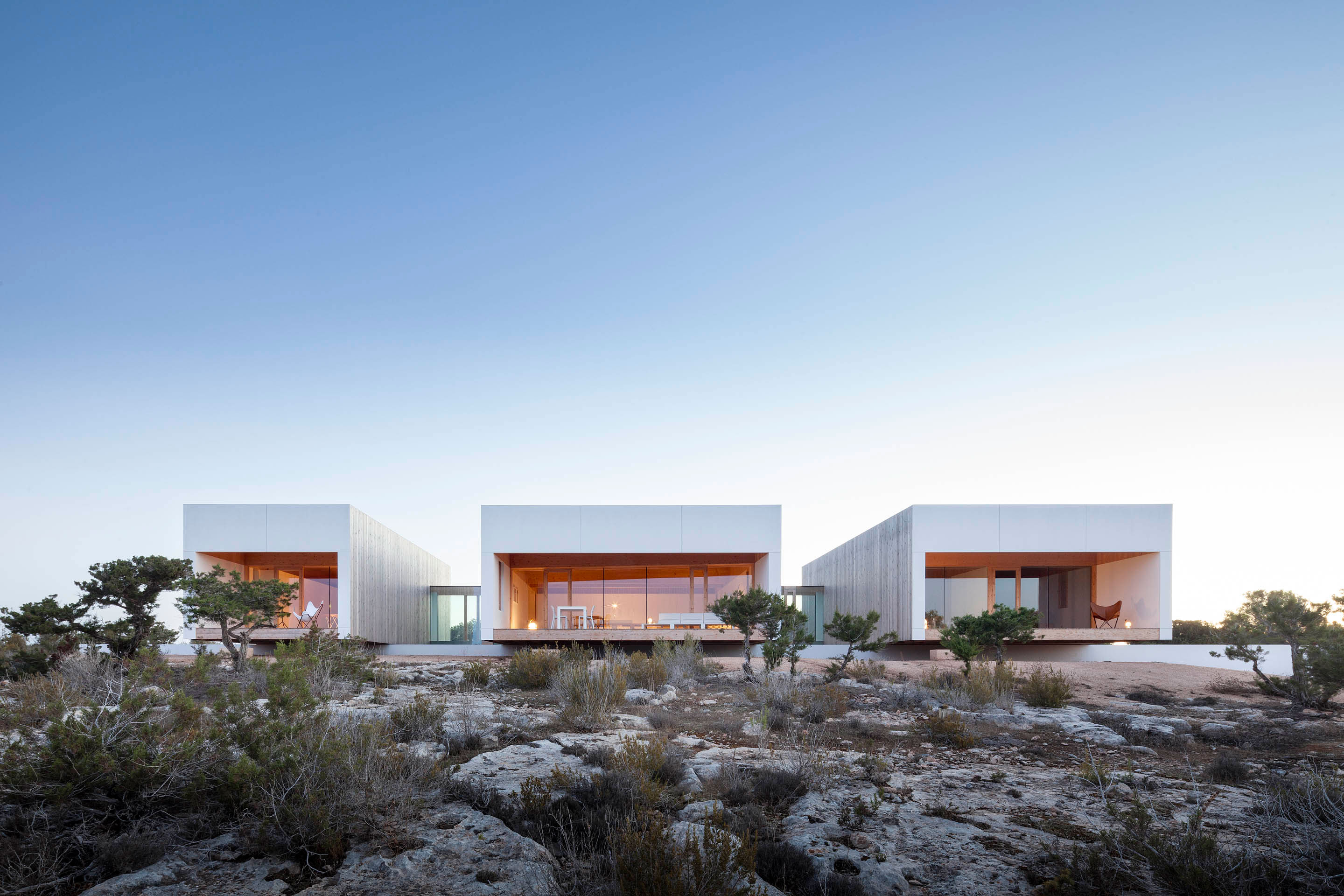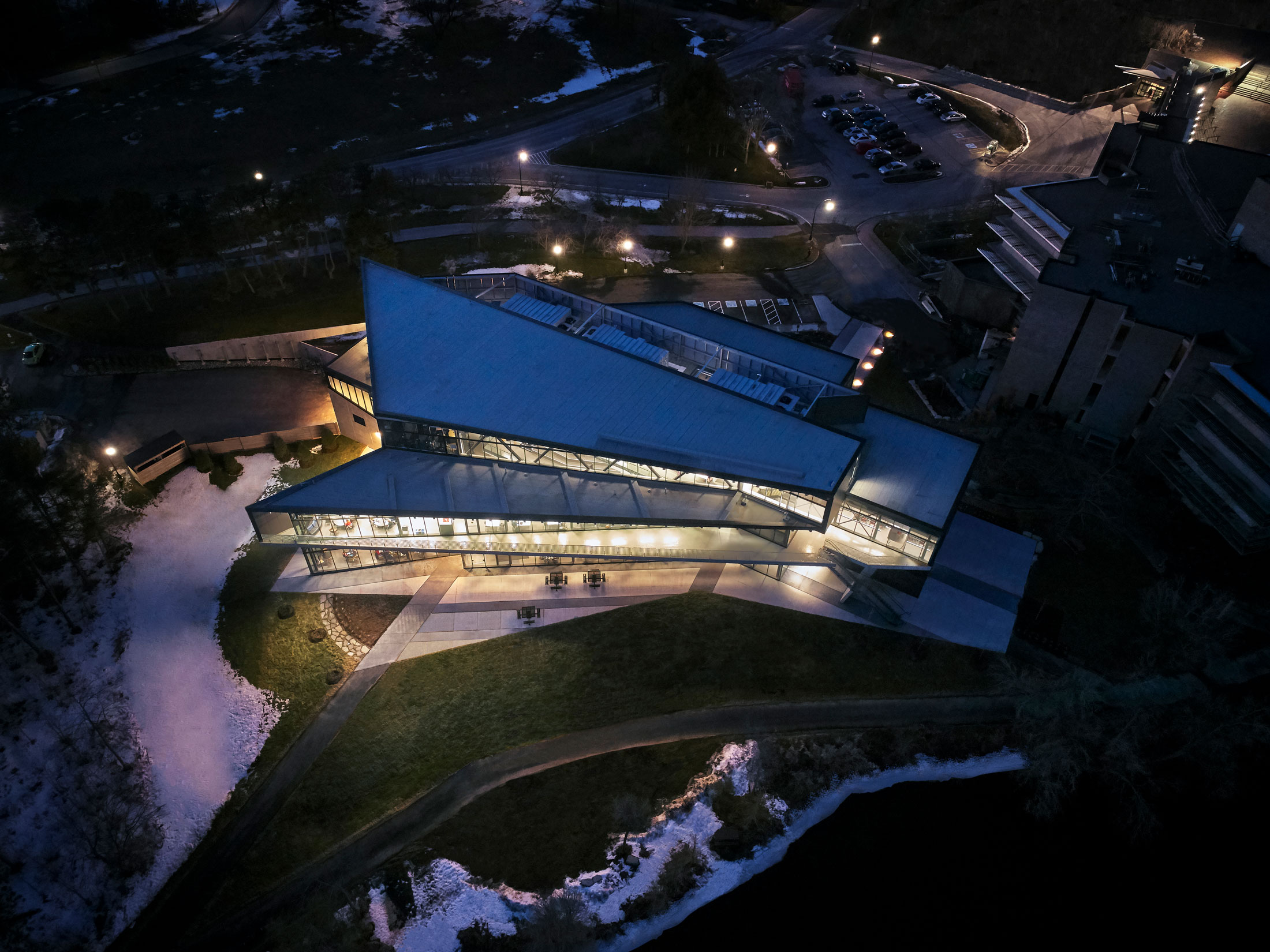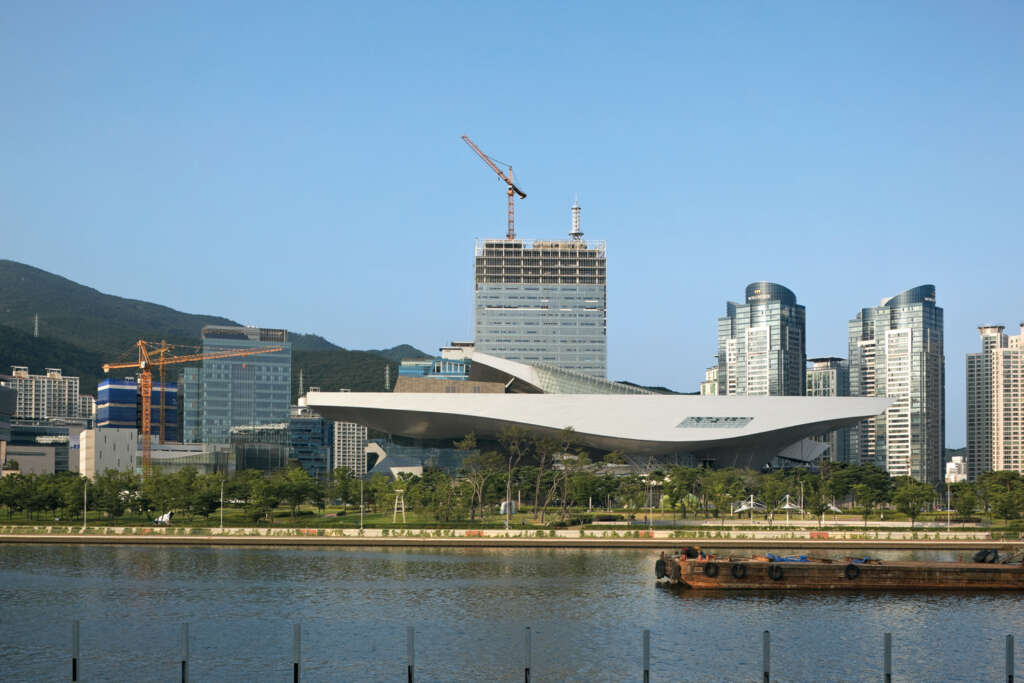
Busan Cinema Center
Architect: COOP HIMMELB(L)AU
Location: Busan, South Korea
Type: Cultural
Year: 2011
Photographs: Markus Pillhofer
The following description is courtesy of the architects. The Busan Cinema Center provides a new intersection between public space, cultural programs, entertainment, technology and architecture creating a vibrant landmark within the urban landscape. LED saturated outdoor roof elements acting as a virtual sky connect building-objects and plaza-zones into a continuous, multifunctional public urban space. Media, technology, entertainment and leisure are merged in an open-architecture of changeable and tailored event experiences. The Cinema Center also houses the annual Busan International Film Festival (BIFF).
The concept of Coop Himmelb(l)au envisions an urban plaza of overlapping zones: the Double Cone, the Cinema Mountain, the Urban Valley, the Red Carpet Zone, and the BIFF Hill. This complex is sheltered by two large roofs that are enabled with computer programmed LED outdoor ceiling surfaces. The larger of the roofs includes a column-free cantilever of 85 meters over a multifunctional Memorial Court event plaza. The buildings contain a theater, indoor and outdoor cinemas, convention halls, office spaces, creative studios and dining areas in a mixture of sheltered and linked indoor and outdoor public spaces. The design of these spaces supports flexible, hybrid functionality that can be used both during the annual festival period and day-to-day use without interruption.
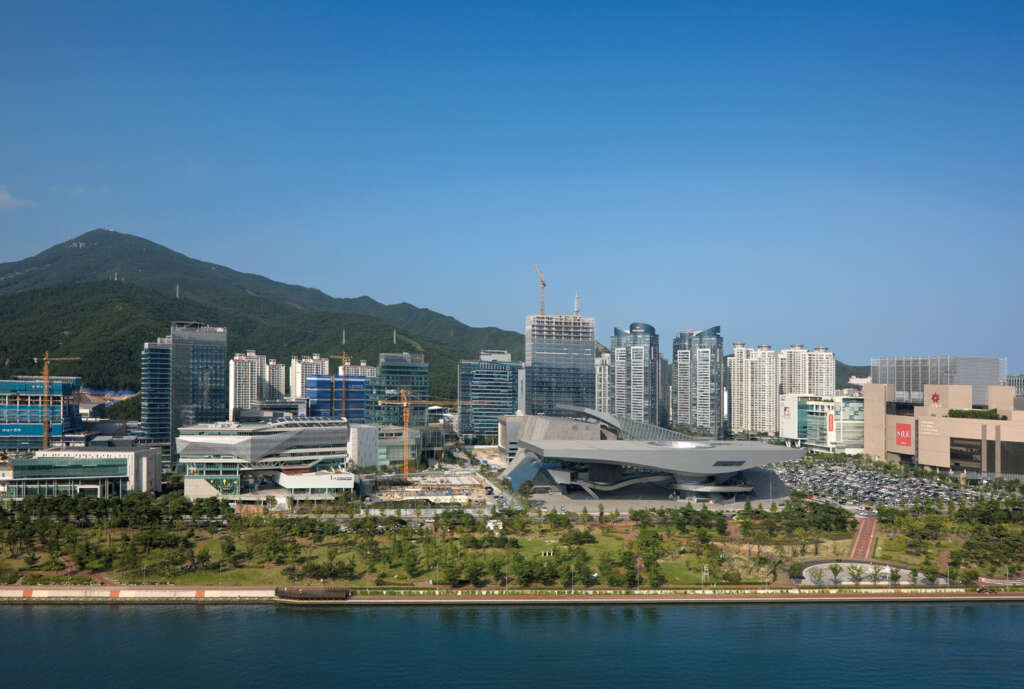
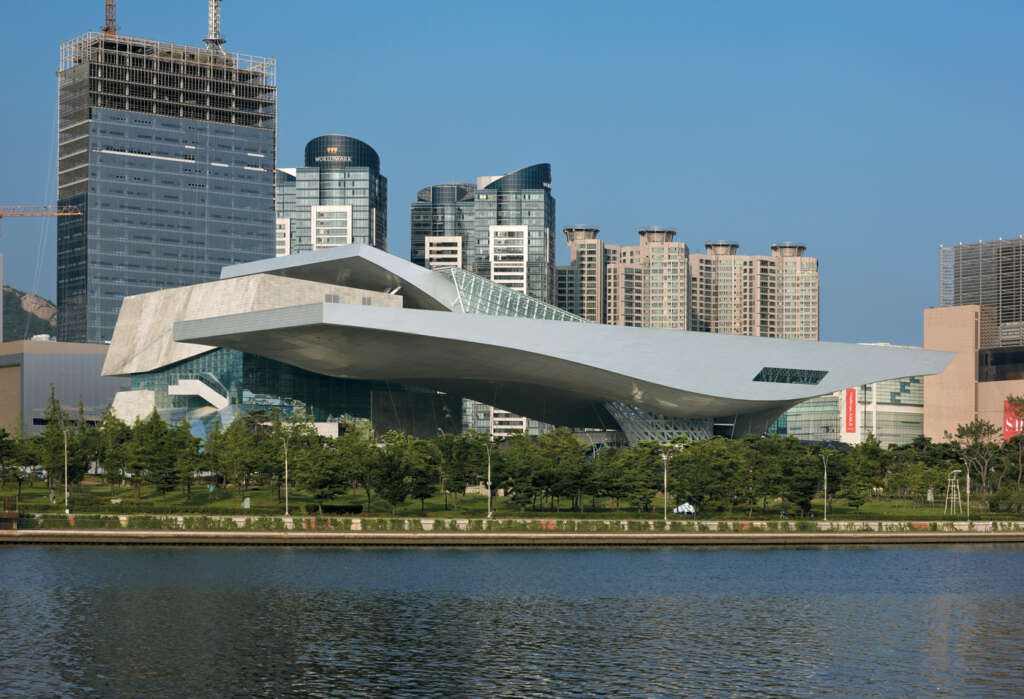
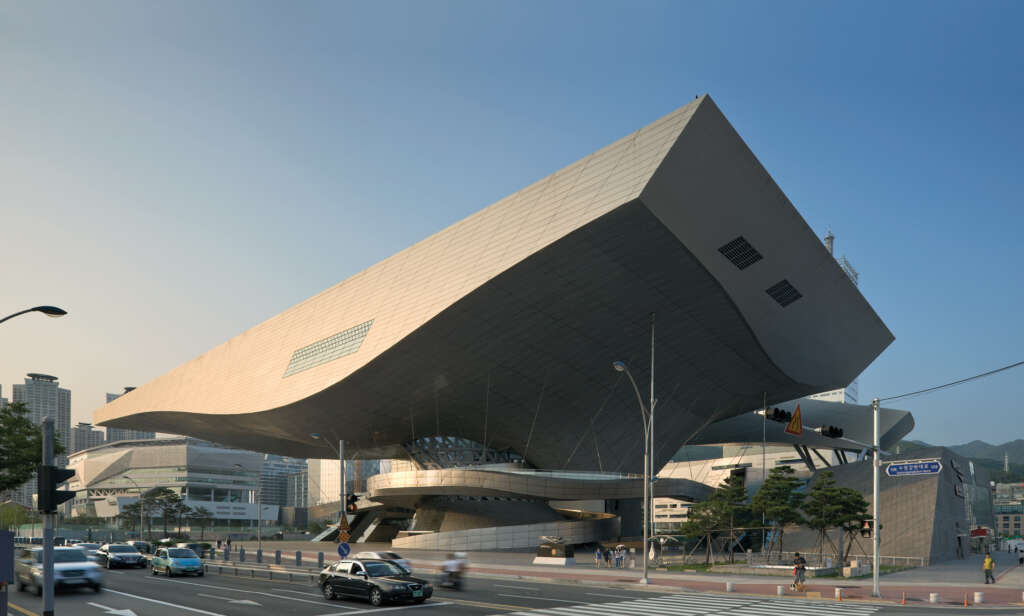
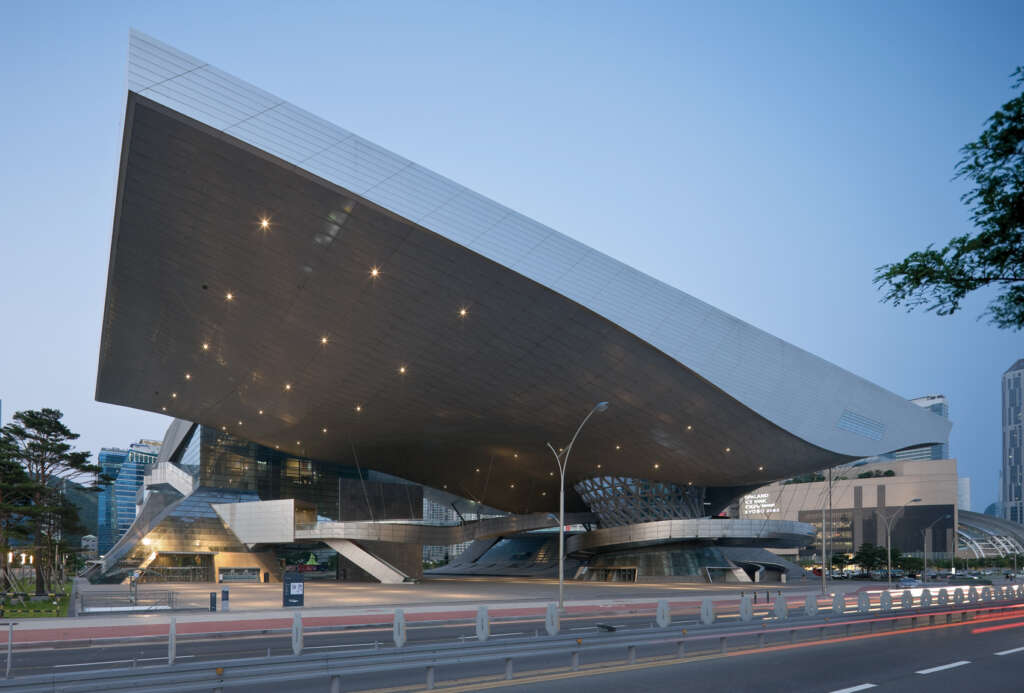
Architecture and Cinema – the Main Roof
The dynamic LED lighting surface covering the undulating ceilings of the outdoor roof canopies gives the Busan Cinema Center its iconographic feature. Artistic lighting programs tailored to events of the BIFF or the Municipality of Busan can be created by visual artists and displayed across the ceiling in full motion graphics. Imbedded in the architecture the lighting surfaces serve as a communication platform for the content of the Busan Cinema Center and create a memorable atmosphere.
The Double Cone is the symbolic landmark entrance element to the Busan Cinema Center and connects the Cinema Mountain and the BIFF Hill. The Double Cone also is the only vertical structural support for the large cantilevered roof acting as a large, singular column.
The ground level of the Double Cone contains a public café with outdoor seating, and the upper level links to a world-class restaurant, bar and lounge within the roof volume with views overlooking the APEC park and river beyond.
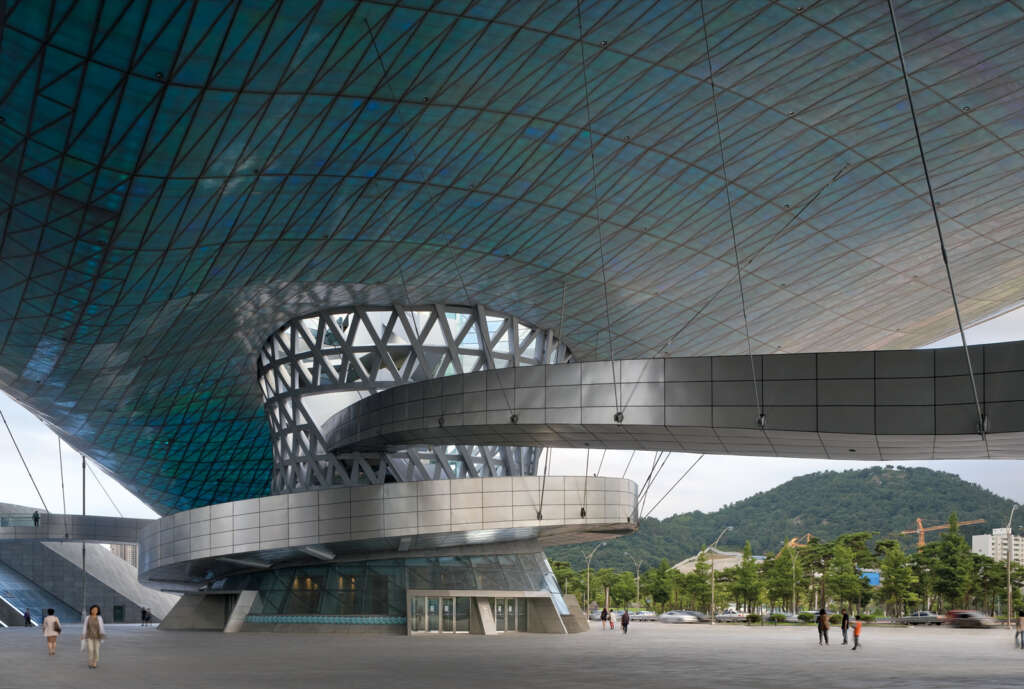
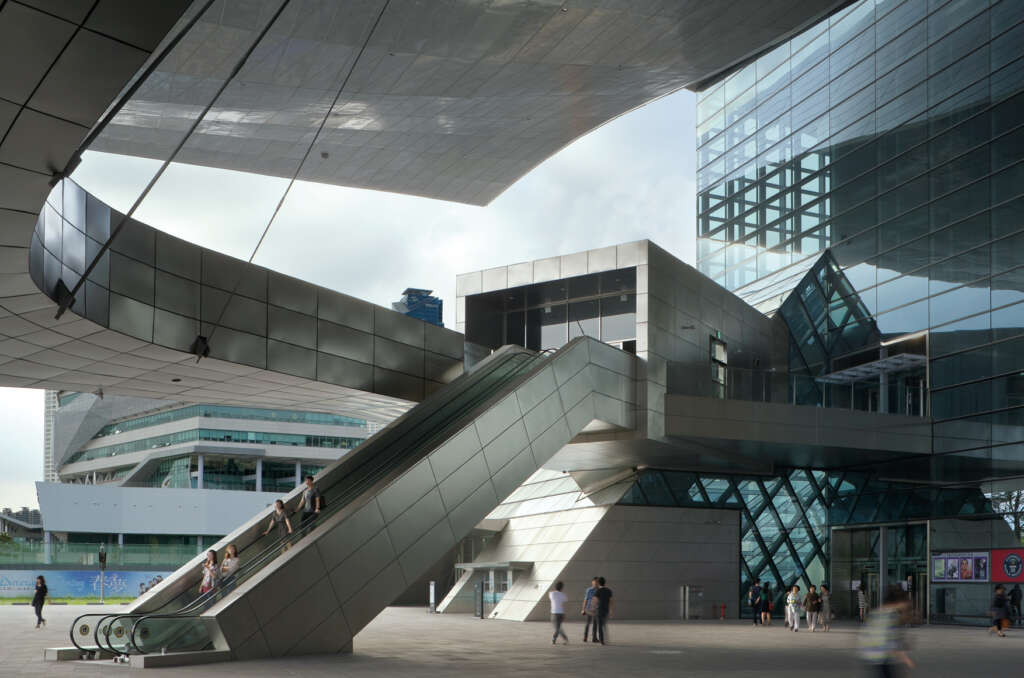
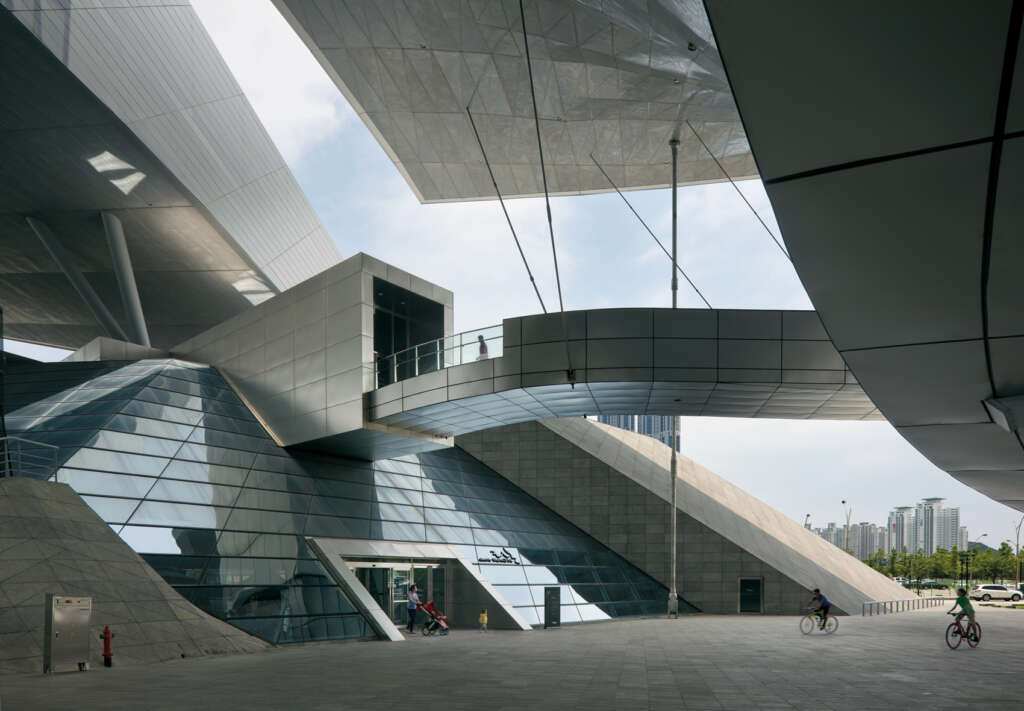
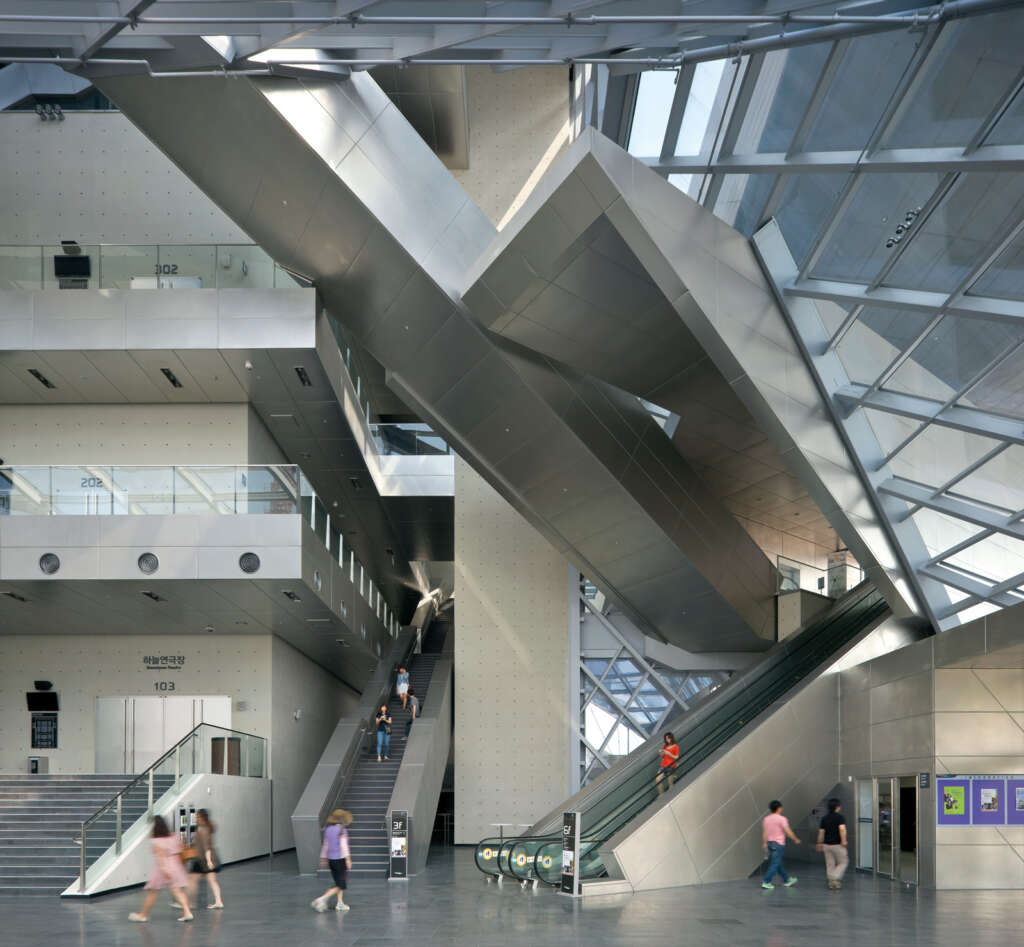
During the festival the Double Cone marks the Red Carpet Zone and VIP entrance to the “Busan Cinema Center”, and can be used as a pre-event space for VIP’s on the ground level, or as a pre-staging area for transfer to the Red Carpet procession to the outdoor cinema stage, or to the upper levels of the Cinema Mountain and BIFF Hill foyers.
The Cinema Mountain is a multifunctional building containing both a 1,000 seat multifunctional theater with fly-tower and full backstage support, and a three-screen multiplex comprised of a 400-seat and two 200-seat Cinema. Separate entrances and foyers are provided for theater and cinema respectively, however the foyers and circulation are designed so that they can be combined depending on operational preferences.
The theater is designed as a first-class, flexible hall with seating on two levels and optimal sight lines and adjustable acoustics. A flexible proscenium type stage with side stages and fly-tower accommodates movable acoustical towers used to close down the stage volume for concerts and operatic theater, but can be easily moved for theater, musicals and other staged events. The stage includes a fore-stage lift that can provide additional seating, an orchestra pit or stage extension as preferred. Horizontally tracking curtains along the walls of the audience chamber can be hidden or deployed to adjust the acoustics of the space.
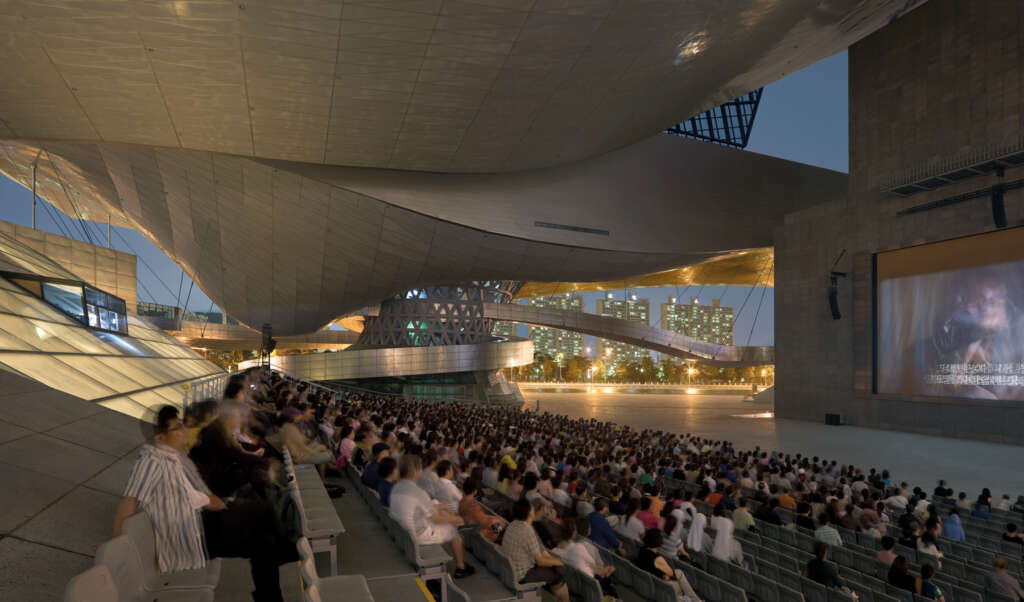
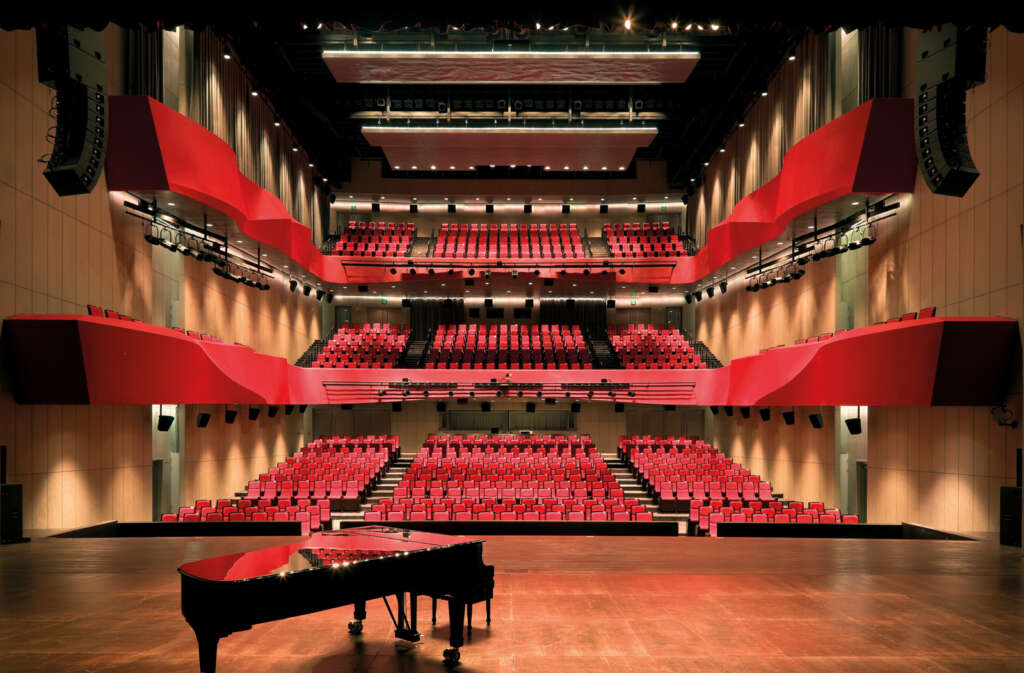
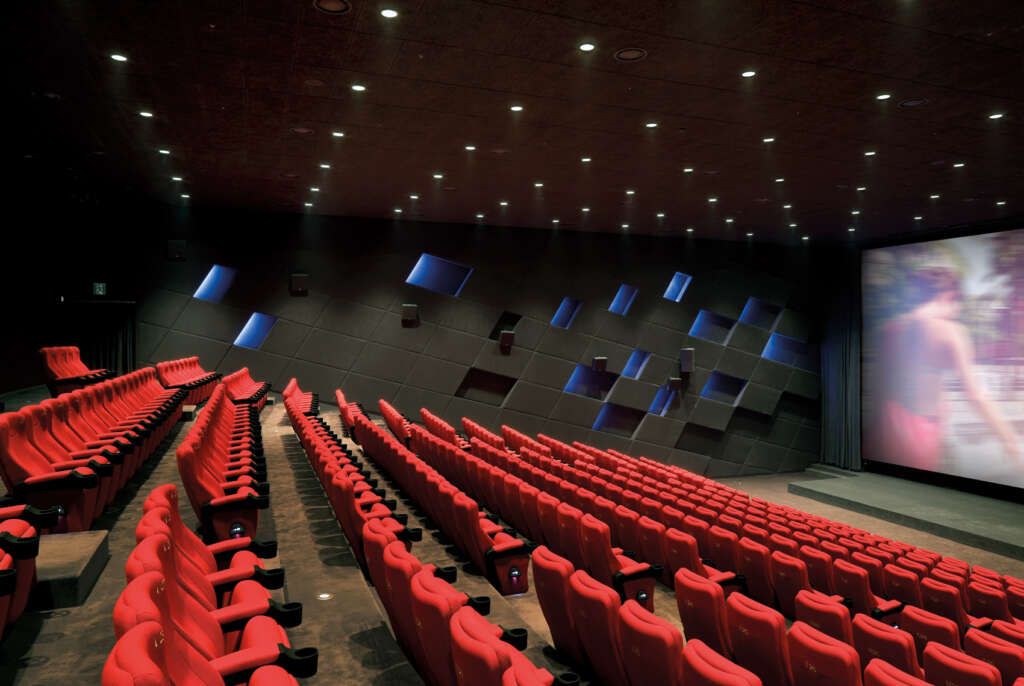
The Urban Valley is sheltered by a large sculpted outdoor roof and combines a flexible flat ground surface and large stepped tribunes of the BIFF Hill as seating for a 4,000 seat Outdoor Cinema. Accommodation for purpose built projection screens, stages, loudspeaker and lighting arrays are provided allowing for exterior performances to share the interior theater’s backstage facilities.
The BIFF Hill creates the tribune seating space of the outdoor cinema and the concourse, the convention hall, the BIFF-center, the BIFF-offices and the visual media center. Given the flexible organization of the ground plan, it can be easily adapted to the different requirements during festival and day-to-day usage.
During the BIFF festival, or for other special events, the Red Carpet Zone is created by a special drop-off and media-event processional entrance. A red carpet can be extended from the Double Cone event space and photo position to the south through the park and along a pier. During non-event periods the Red Carpet Zone acts as the symbolic entryway into the Busan Cinema Center complex.
The Memorial Court is a grand entryway to the Cinema Mountain. Due to the column-free sheltered roof above, this public plaza is a multi-functional event space that can be utilized for BIFF- or Busan City- events.
Project Details
Project Team
- Client: Municipality of Busan
- User: Busan International Film Festival
- Planning: COOP HIMMELB(L)AU – Wolf D. Prix & Partner ZT GmbH
- Design Principal: Wolf D. Prix
- Project Partner: Michael Volk
- Design Architects: Martin Oberascher, Jörg Hugo
- Project Architect: Günther Weber
- Project Team: Markus Baumann, Jan Brosch, Jasmin Dieterle, Sergio Gonzalez, Hallstein Guthu, Rob Henderson, Veronica Janovska, , Ivana Jug, Matt Kirkham, Jana Kucerova, Dieter Segerer, Anja Sorger
- 3D Design: Renate Weissenböck, Jan-Ruben Fischer
- Model: Paul Hoszowski, Ernst Stockinger, Vincenzo Del Monaco, Johannes Spiesberger, Markus Erhardt, Hyoung Sub, Marc Werner
- Photography: Markus Pillhofer
- Competition Team: Victoria Coaloa, Rob Henderson, Paul Hoszowski, Jörg Hugo, Irakli Itoni, Alex Jackson, Matt Kirkham, Shannon Loew, Mona Marbach, Jens Mehlan, Tom Wiscombe, Burcu Bicer, Etienne Chanpenios, Monika Heliosch, Akvile Rimantaite
- Renderings: Armin Hess/Isochrom
- Local Partner: Heerim Architects & Planners, Seoul / Korea
- Structural Engineering: B+G Ingenieure, Bollinger und Grohmann GmbH Frankfurt / Vienna, Germany/ Austria; Jeon and Partner, Seoul / Korea
- Mechanical, Electrical Engineering: Arup, Berlin, Germany
- Lighting Design: Har Hollands, Eindhoven, Netherlands
- Wind Studies: Wacker Ingenieure, Birkenfeld / Germany
- Façade Consulting to CHBL: Face of Building, Oberpullendorf / Austria
- Theater Consulting to CHBL: Artec, New York / USA
Chronology
- Competition (1st Prize): 11/2005
- Start of Planning: 01/2007
- Start of Construction: 10/2008
- Opening: 29/09/2011
Project Data
- Site Area: 32,100 m²
- Net Floor Area (interior spaces): 51,067 m²
- Gross Floor Area (interior spaces): 57,981 m²
- Built-up Area: 10,005 m² (without roofs)


